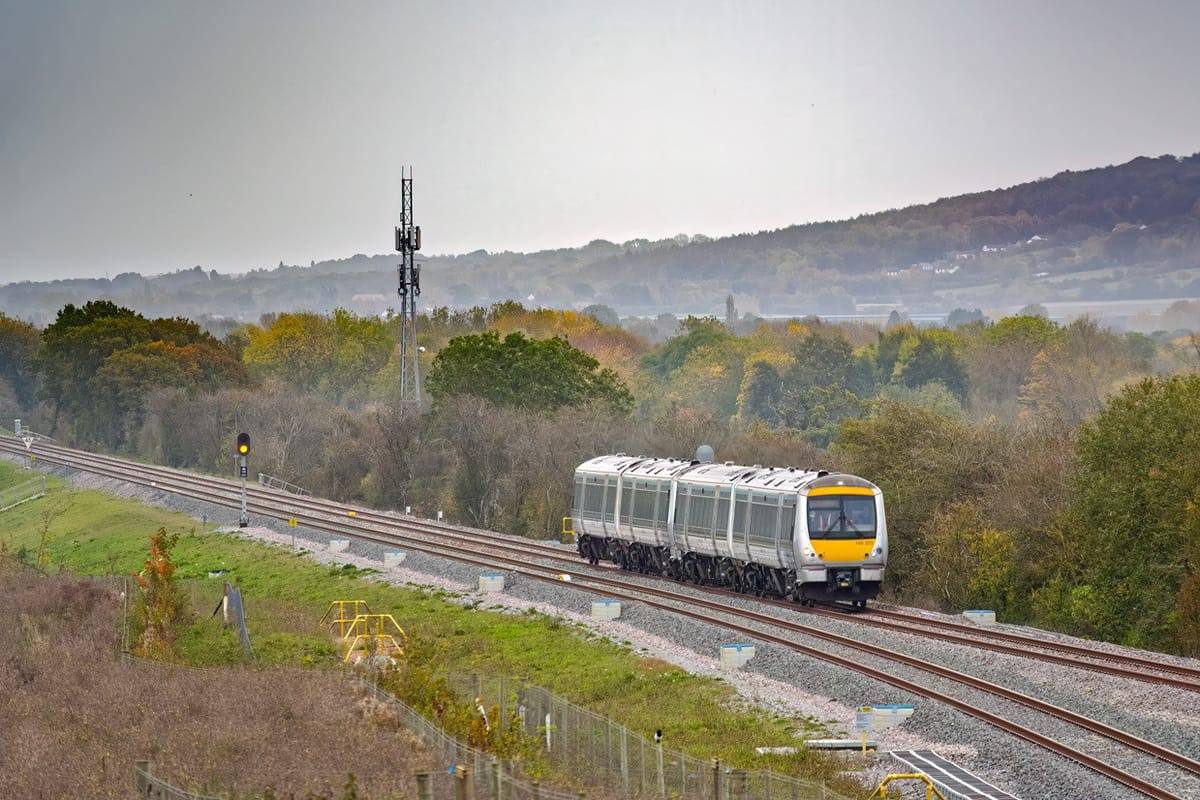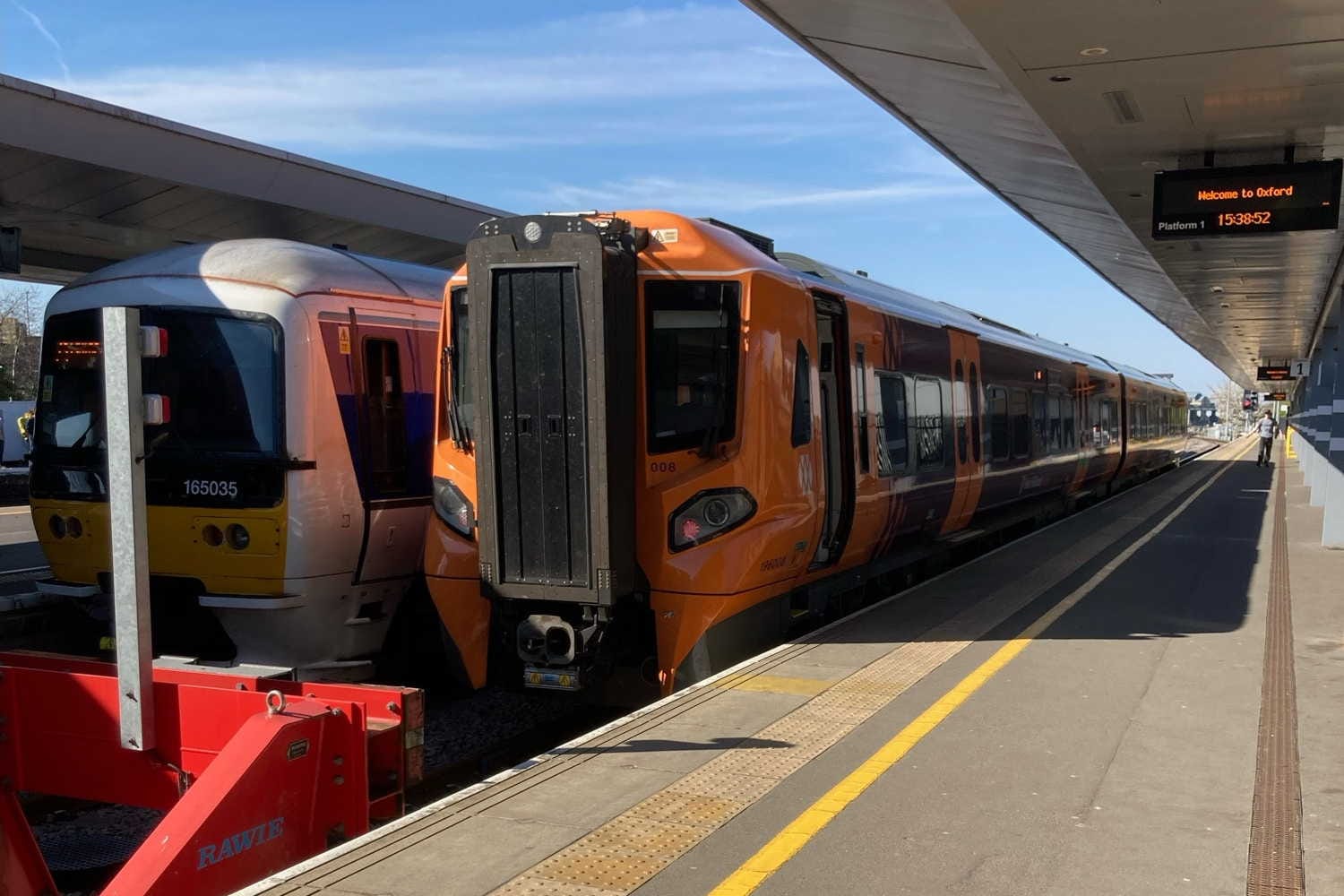We are sorry to announce that the 08.44 to Milton Keynes has been delayed by several months

Oxford’s new railway line to Milton Keynes has been complete for almost a year – but there’s no sign of passenger services beginning.
On 20 October 2024, railway track company Network Rail officially declared the line open. Chiltern Railways and GWR were quick out of the blocks, each running a test train the next day.
More test trains followed in the months to come. There were “route-learning” services for Chiltern’s drivers to learn signal positions, station stopping distances, and other details of the new track between Bicester and Bletchley. Freight trains have become regular visitors to the line. Excursions have run for railfans. A half-hourly timetable for passenger trains has been drawn up.
But those passenger trains still aren’t running.
Earlier this year, Government documents disclosed internal targets of “August 2025” (DfT Annual Report) and “by September 2025” (East West Rail senior job description). We are now in September and this target, 10 months after the line opened, has been missed. “The end of 2025” is now cited as the target date, yet unlike almost every other service, the trains have not been entered in the draft December timetable.

Delay… repay?
The delays are costing real money. Six two-carriage trains have been leased to operate the service. With no farebox income, they’re kicking their heels in a depot in Bletchley, racking up leasing charges. The Department for Transport has now written off £2.6m as a result of delays connected to the lease.
So what’s gone wrong? Publicly, the rail industry has cited issues with the fit-out of the line’s one new station – at Winslow, between Bicester and Bletchley. Although this has indeed taken longer than expected, it would not typically stop the line from opening. The new Northumberland Line, from Newcastle-upon-Tyne to Ashington, opened in 2024 with just two of its six stations ready; one has since been completed and three are still being worked on.
Paperwork has also proceeded under yellow (cautionary) signals. The DfT only announced Chiltern Railways as the operator of Oxford–Milton Keynes services on 25 March 2025, meaning that the line had been sitting complete but near-idle for five months without a commitment as to who would operate trains on it. Chiltern had, in fact, been recruiting drivers for the line since summer 2023. But the DfT announcement mirrored the slow pace of preparation.
We’re just waiting for a guard
The Oxford Clarion understands, however, that industrial relations have been a major stumbling block.
45 drivers have been recruited for the new service, but no guards (aka ‘train managers’). The Government wants the line to run with ‘Driver-Controlled’ or ‘Driver-Only Operation’, where the driver releases and closes the doors at stations, and no guard is required. Introduced widely on London commuter services in the 1980s to cut running costs, it is fiercely opposed by rail unions; a recent dispute on South Western Railway lasted for over four years. Both the main unions have a position against any ‘extension’ of driver-only operation, and a new line is, of course, an extension.
An obscure Government body, the National Infrastructure & Service Transformation Authority, alluded to the dispute in a recent report. Its line on East West Rail read:
“Risk still remains over the trade union response to the mode of operation decision and how this may affect proposed time schedules to enter into service.”
Richard Allan, managing director of Chiltern Railways, confirmed this in a podcast interview:
“The final bit we need to finalise is how we’re going to operate the services. We’re talking to colleagues and to trade union partners about that. When we’ve got something to say, we'll be able to share that more widely.”
Needless to say, “how we’re going to operate the services” would not usually be “the final bit” of preparation – it would be the first. By starting recruitment for drivers in 2023, but not guards, Chiltern (under instruction from DfT) had signalled that it knew exactly how to operate the services a full two years ago.
But squaring that with the unions is a different matter. The SWR dispute was resolved with a fudge, effectively saying most trains would still have guards, they’d be called guards, but they wouldn’t quite be acting as guards. (The distinction between ‘Driver-Only’ and ‘Driver-Controlled’ comes into play here: DOO envisages a driver alone on the train, whereas DCO may have staff on board to check tickets or assist passengers.) Chiltern’s situation is already finely balanced: services south of Banbury don’t have guards, whereas those between Banbury and Birmingham do. The company will not want its existing guards to walk out on the suspicion that their days may be numbered.
The Clarion asked Chiltern Railways for the current state of negotiations. They replied with a non-committal statement:
“We are working closely with the Department for Transport and other industry partners to deliver this service for local passengers and businesses. We are looking forward to commencing services once we have completed mobilisation and gained the necessary approvals.”
Meanwhile ASLEF, the train drivers’ union, restated their official line in support of guards:
“We believe in having a guard as well as a driver on the train – for passengers, and for the smooth and safe running of the railway.”
The RMT union, which represents guards, did not respond to a request for comment.
The train now approaching?
Few doubt that Oxford–Milton Keynes trains will be a success when they start running, whether that be next week or next year. Indeed, there’s concern that passenger numbers will soon overwhelm the two-carriage trains leased for the line.
Oxford is already smarting from delays on one railway project, the spectacularly overrunning Botley Road bridge rebuild. East West Rail has not yet reached that level of delay. But a city which is pinning its hopes on a reopened Cowley Branch Line, and a county which aspires to new stations and more trains, will want reassurance that their growth plans won’t be stymied by yet more delays.
